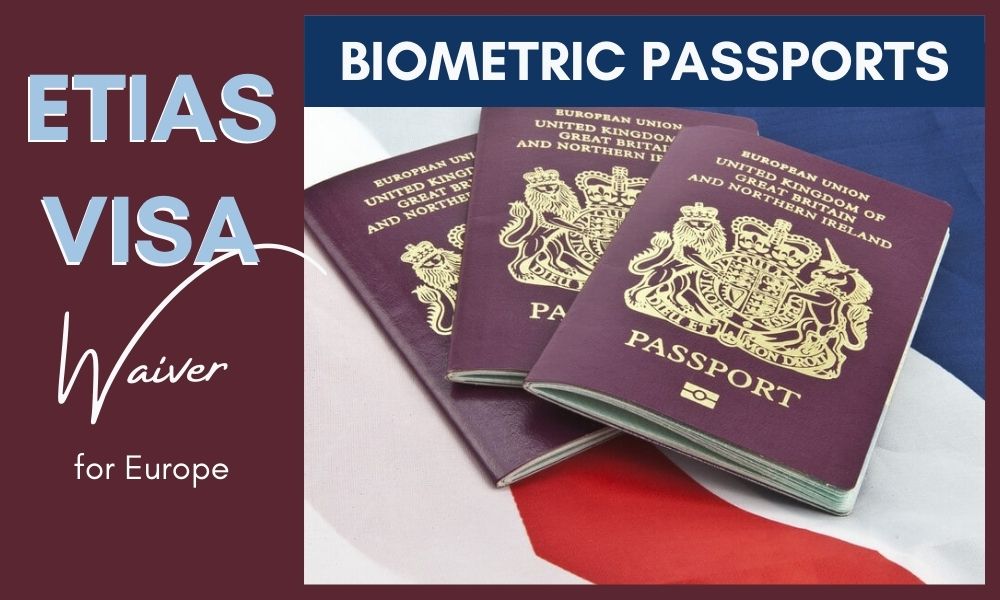
Biometric passport holders can apply for ETIAS
By jmarble on Sun, 12/20/2020 - 23:05
Biometric passports can apply for ETIAS
ETIAS and biometric passports add enhanced technology to our travel plans
Americans and Canadians have gotten pretty accustomed to traveling to Europe with only a passport and a sense of adventure, but those days are short-lived. Beginning in late 2022, citizens from 61 countries, including those in North America, will have to apply for pre-authorization in order to continue to travel visa-free.
This authorization, known as the European Travel Information and Authorization System (ETIAS) is digital documentation that is attached to a biometric passport. Biometric passports will be required for entry to Europe going forward, but you may even already have one. Learn more about biometric passports and how they work, as well as how ETIAS will be a part of it.
What is a biometric passport?
A biometric passport essentially looks just like a non-biometric passport. The main difference is that this type of document (also known as an e-passport or digital passport) has added technology that helps tie your identification information to your travel documentation.
Each biometric passport contains a microprocessor chip with a transmitter that allows the document to be scanned and process entry and exit, as well as tie other digital information together.
Your e-passport will contain the same information that physically appears on your passport, including:
Your full name
Birthdate and birthplace
Photo identification
These added security features make it more difficult to forge documents, and it also makes the security check-in process faster.
How do I know if I have a biometric passport?
If you’re an American or Canadian passport holder, you likely already have a biometric passport. Based on when the United States implemented e-passports, all US citizens with a current passport have a biometric passport.
Canada adopted e-passports in 2013, so if you have a 10-year expiration and received your passport before 2013, you may need to re-apply for a digital passport.
However, the easiest way to tell if you have a digital passport is to look at the cover. There is an international biometric passport symbol that looks like a camera that’s printed on the cover of all e-passports, regardless of the country of issue.
How do I obtain a biometric passport?
All US and Canadian passports issued at this point are e-passports. That being said, if you are applying for a new passport, you will likely be asked to submit the following as part of your application:
Documents confirming citizenship
Identification details (date of birth, family information, etc.)
Photo identification
Other identification information (e.g. fingerprint)
If you are simply renewing your passport, documentation needs may differ.
What is ETIAS?
ETIAS is a visa waiver program that still allows you easy travel within Europe. When you apply for ETIAS (authorization is valid for three years), you will be allowed to enter and exit the Schengen Travel Zone of Europe for up to 90 days in any 180-day period. This visa waiver program will be required for short-term travelers from North America, among other regions.
The 26-country travel zone includes most European Union members as well as European trade partners such as Iceland and Norway. Authorization permits easy entry into the Schengen Area and essentially border-free travel within the region after entry, without the need for additional paperwork.
The online application process requires the applicant to supply identification information that will be compared to your passport information as identity confirmation. This is also a background check against a European security database to assess for any potential security risks.
Long-term travelers (more than 90 days) will not be eligible for ETIAS and must still apply for a visa.
Do I need a biometric passport with ETIAS?
The short answer? Yes.
According to the European Council (the legislative branch of the EU), ETIAS is designed to:
Secure the Schengen Zone’s external borders
Make entries and exits to the region more efficient
As a form of security check and identity confirmation, travelers from 61 countries will need to be pre-approved in order to travel to the Schengen Area. This authorization process, scheduled to start late 2022, will require a biometric passport because the authorization will be digital documentation tied to your passport.
Instead of manually checking your passport to confirm your ID, border security will simply scan and process, making entry and exit faster and easier. All of your documentation will be connected digitally through one document—your biometric passport.
When will the European Travel Information and Authorization System be effective?
The system is scheduled to launch late 2022. There will also be a six-month grace period, but travelers are encouraged to not delay the application. The online application does not require any in-person meetings, but it does require a biometric passport and must be filled out precisely—inaccurate applications may result in denial.
Technology is the future of travel. Be prepared with a biometric passport and ETIAS
The Schengen Area of Europe is worth planning for. With 26 countries to explore, practically anything on your European bucket list is possible. Get ready for travel with a biometric passport, and stay current on ETIAS and other travel updates.










